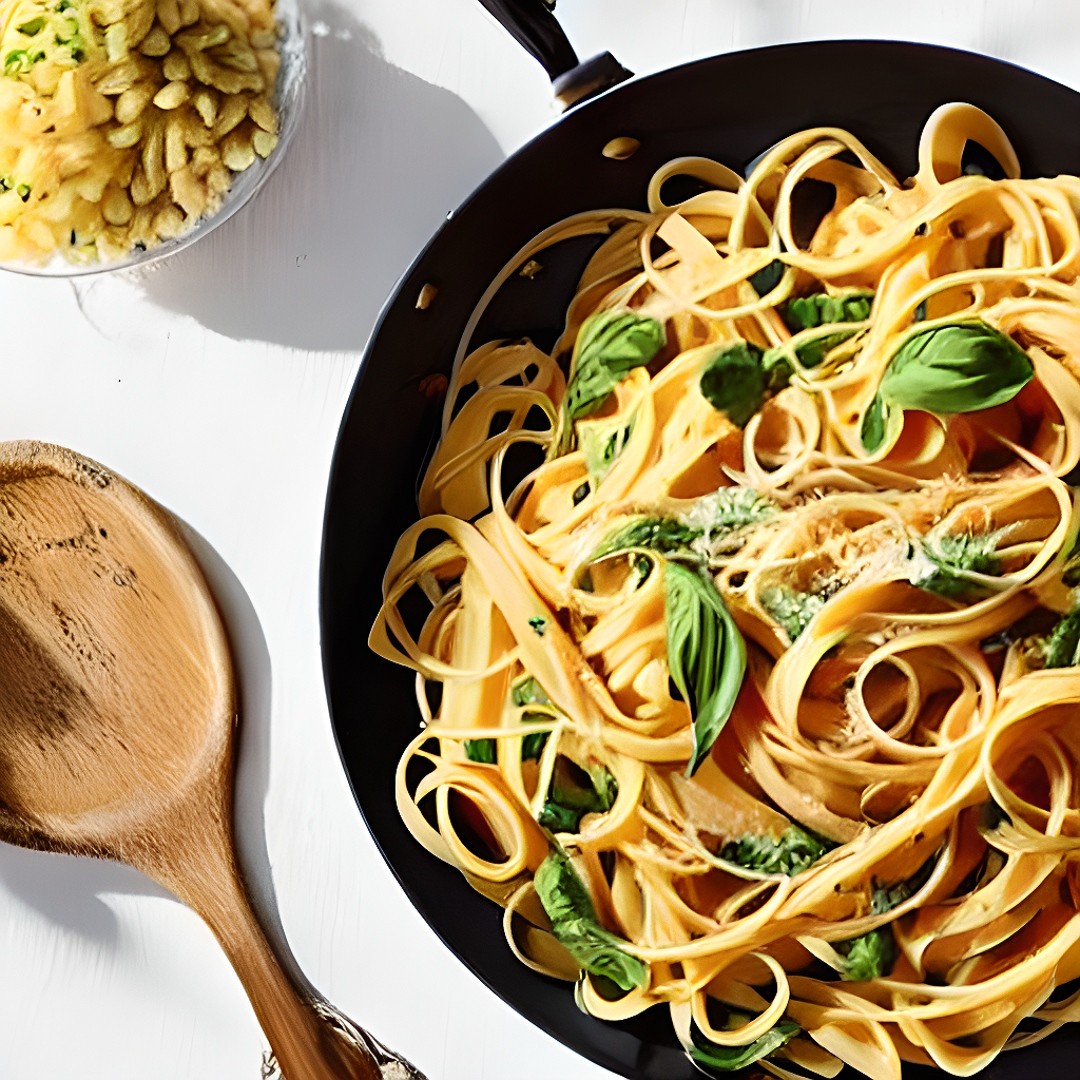Pasta is such a staple around most of the world that we can sometimes take it for granted. It’s a pretty simple food, but while many people enjoy it on a daily basis, most people don’t know the most surprising facts about pasta.
What kind of facts, you may ask? I hunted down the 12 most interesting facts about pasta that I’m sure you’ll be surprised to know.
1. Pasta was first made in China, not Italy
Shocked, right? While pasta is pretty much synonymous with Italian cuisine, in fact the first recorded reports of pasta being eaten actually come from China.
Those reports go all the way back to 5,000 BC.
In fact, legend says that Marco Polo, the famous Venetian explorer, actually introduced noodles  to Italy some time in the 12th century. However, historical records show that pasta was already eaten in Italy by 500 BC.
to Italy some time in the 12th century. However, historical records show that pasta was already eaten in Italy by 500 BC.
Still, that’s 4500 years after China.
2. The many, many shapes of pasta
How many shapes of pasta do you think there are? 5? 10? 25?
How about 600? Yep, that’s right. This is one of the least known facts about pasta.
There are 600 official pasta shapes produced throughout the world. At least, that’s according to the International Pasta Organization, which was founded to help increase awareness and consumption of pasta.
3. American pasta, brought by Jefferson
Many people assume that pasta probably came on the boats with the Italian immigrants seeking new opportunities in the New Land. That would be around 1890 – 1914.
However, the actual introduction of pasta to the new American audience happened long before that. About 100 years before that, to be exact.
It was in fact Thomas Jefferson – yes, the 3rd US President – who introduced Americans to the delicious food all the way back in the 18th century.
4. No tomato sauce until much later
You can probably put 2 and 2 together and figure this one out if you know about the history of tomatoes in Europe. That’s because tomatoes weren’t brought to Europe until 1519, when Cortez, the Spanish explorer, brought the red fruit from Mexico.
Before then, pasta was eaten without tomato sauce. But after that, pasta and tomato sauce became a match made in heaven.
5. After Italy, the country that consumes the most pasta is…
America? The UK?
Many people would assume it’s one of those countries listed, as we certainly do have a love for pasta, but they’d be dead wrong.
In fact, you’d have to go further south for the #2 – Venezuela. That’s right – according to the International Pasta Organization’s data, Venezuelans eat 12.3 kg of pasta per year (per capita), putting them at #2.
The #3 spot goes to Tunisians, who eat 11.9 kg of pasta per year.
6. Italians eat a lot of pasta
Yes, Italians eat the most pasta per capita per year of any population in the world. But exactly how much is that?
That would be 26 kg per person per year. If you’re not too familiar with kilograms, that’s a whole lot – almost 60 pounds!
To put it in other terms, if Italians at the same yearly amount in spaghetti shape, that’d be enough pasta to wrap around the planet 15,000 times.
That’s a lot of pasta.
7. The favorite American pastas are…

The first one should be no surprise – spaghetti! The 2013 Barilla World Pasta Day survey showed that Americans love spaghetti above all other pasta varieties.
The second place goes to penne, and the third most loved pasta variety in the US is rotini.
8. ‘Pasta’ means different things in different languages
While the word ‘pasta’ may seem pretty much international at this point, there are actually differences in meaning for the word depending on what language you’re using.
For example, in Latin, pasta means “dough pastry cake,” while in Greek it means “barley porride.” That last one doesn’t sound so good.
In Italian, however, pasta actually means “paste,” which is logical, as that’s the way that pasta is made, by making a paste of water and flour and other things like olive oil and eggs.
9. Pasta will make you happy
Pasta makes most people happy, because it’s a delicious food that can be prepared in many ways.
However, according to science, pasta can actually make you happy on a deeper level. That’s because there are lots of carbohydrates in pasta.
These carbs will up the amount of serotonin in the body, which many scientists belive will bring about feelings of happiness and well-being.
10. 600 varieties of pasta – and more than 1300 different names
What’s in a name? Believe it or not, while there are more than 600 different shapes of pasta, there are actually more than 1300 names for them.
This is because, depending on what region you find yourself in, one pasta can have many different names. There are differences in names for pasta based on the city and country.
11. Pasta was originally eaten by hand
Yep, this kind of makes sense when you think about it, especially considering the fact that sauces came later.
Originally, people ate pasta with their hands. After all, it would be much easier to grab and enjoy it.
However, when sauces were introduced with pasta, especially tomato sauce, it became very difficult to eat it by hand without having to change clothes many times a day.
Therefore, cutlery was added to the Italian table – first in high class culture, then becoming ubiquitous throughout the land.
12. Pasta – for pets?
Pasta is believed to be very beneficial for dogs and cats, as it can help their growth development and provide them with beautiful, healthy and glossy coats.
In fact, this is the reason why pasta is included in so many pet food products.
Of course, while pasta can be great for your cats and dogs from time to time, it isn’t recommended to give it to them too frequently.
Nutritional Benefits Of Eating Pasta
There are many amazing benefits to eating pasta, and you might be surprised at some of them. For example, pasta is gluten- free and low- glycemic index, making it a great source of energy. Additionally, pasta is made up of more water than any other food – meaning that it’s hydrating and refreshing. It’s also a good source of satiating protein and can help reduce the risk of heart disease. In fact, one study suggests that eating pasta might even help in controlling weight gain!
Some other notable benefits of eating pasta include its high levels of antioxidants, vitamins, minerals, and fiber. Including pasta in your diet can provide you with important nutrients such as vitamin C, iron, and zinc. Overall, there are many reasons to start including more pasta in your meals – so don’t wait any longer!
Popular Italian Dishes & Recipes
If you’re ever in the mood for some delicious Italian cuisine, you’ll want to know about pasta. This versatile food has been around for centuries and is beloved by people all over the world. In this section, we will explore some of the most popular Italian dishes and recipes. We’ll also explain some of the different types of pasta and how they are used in various recipes.
Almost 4.5 billion servings of pasta are eaten by Italians every year – that’s more than any other country! Italy is the top producer of pasta in the world, and it was introduced to Europe over 800 years ago. Around 505 million pounds of dried pasta are sold in US stores each year – which makes it one of America’s top imports. There are over 600 types of pasta shape found around the world, but two main categories dominate: short and long spaghetti.
Traditional Italian recipes often include ingredients like olive oil, garlic, tomatoes, onions, herbs and cheese. These ingredients lend a richness and complexity to many dishes that would be missing without them. Another hallmark of Italian cuisine is its use of various cooking techniques – roasting, poaching, grilling or baking – to make traditional dishes like lasagne or spaghetti al dente (tender). Popular Italian desserts include tiramisu (a dessert made from ladyfingers soaked in espresso), gelato (a type of ice cream with a higher percentage of milk fat), cannoli (doughnut-shaped pastry filled with flavored cream) and panna cotta (a typeof custard). Italians often enjoy their food with a glass or two of wine!
How many of these facts about pasta did you know? Any ones that we missed?




